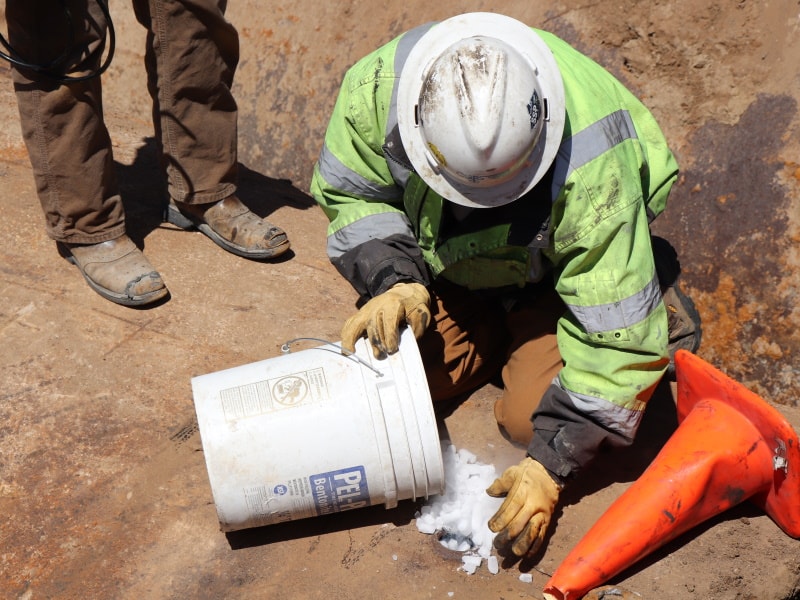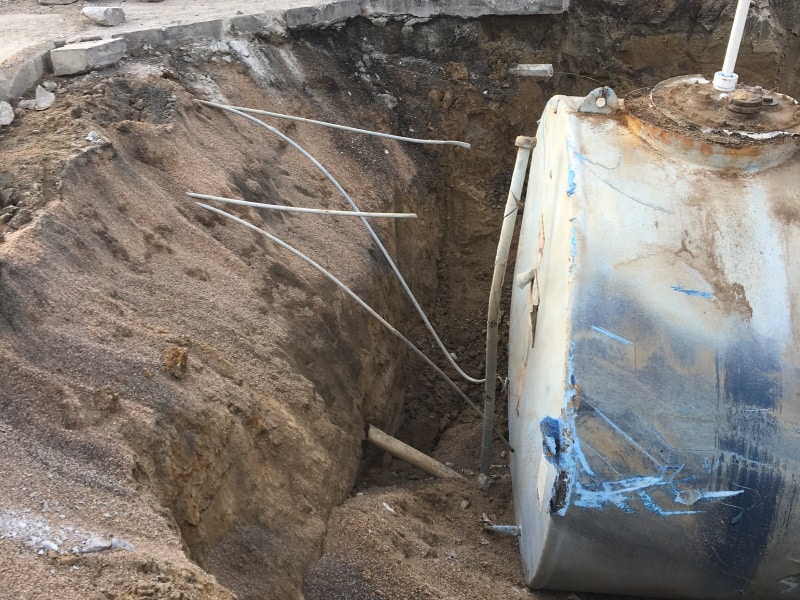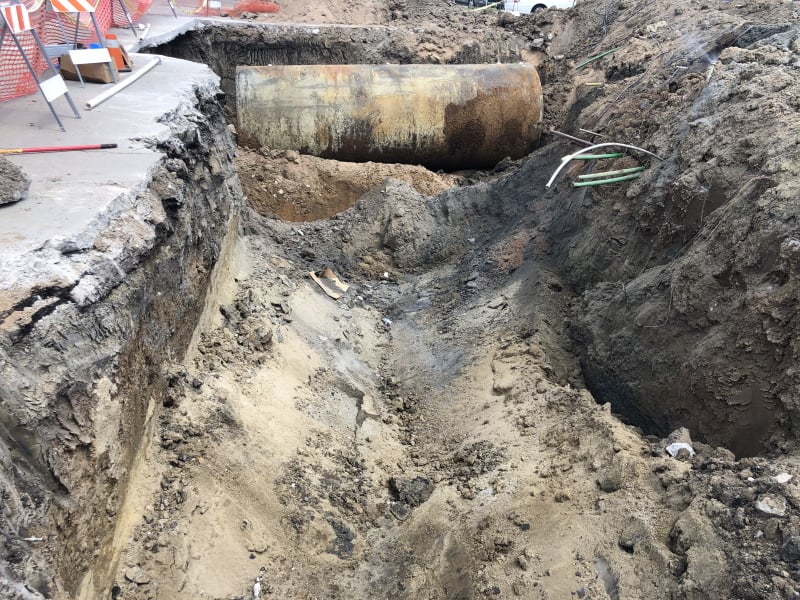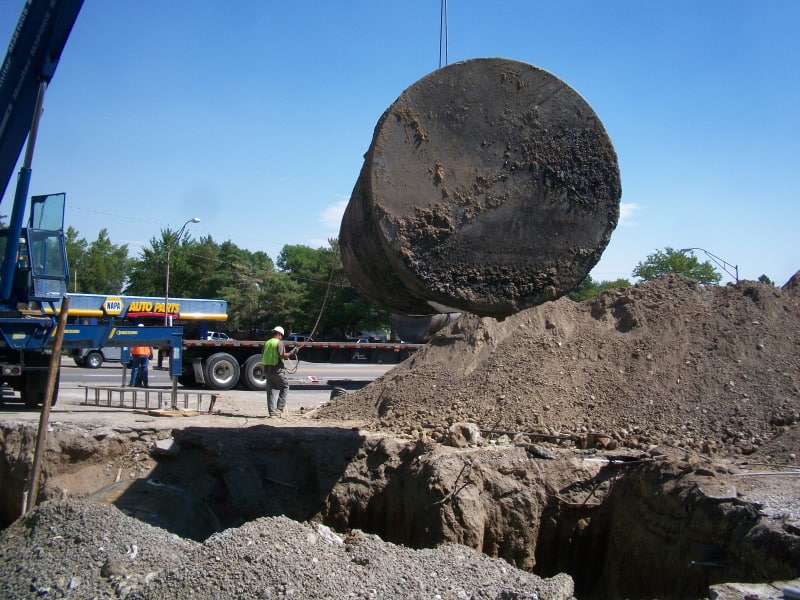Pulling Tanks: the Environmental Side
A tank that has been in the ground for 25 to 30 years has probably outlived its usefulness and likely poses a hazard to the environment and people. With some states offering incentives (Colorado’s Tank Removal Incentive Program has been extended through the end of 2020: see https://ops.colorado.gov/Petroleum/WhatsNew) to prevent that risk, older tanks are coming out of the ground at unprecedented rates.
But there’s more to pulling an underground storage tank (UST) than just pulling a tank.
For instance, in Colorado, the state Division of Oil and Public Safety (OPS) requires 10 days notice before the removal of a tank. It also requires that you sample the soil around registered USTs (those over 110 gallons, with a few exceptions) during removal no matter the age or condition of the tanks or whether signs of contamination exist.
Environmental testing requirements
During a tank removal or pull, OPS requires a visual inspection and field screening of the soil around the tank with a photoionization detector (PID) to check for volatile organic compounds (VOC), which are indicators of contamination. Native soil sampling is based on tank size and whether groundwater is encountered during tank removal. Samples are then submitted for laboratory analysis, which takes into consideration what product the tank contained.
If groundwater is encountered during tank-removal activities, samples of it and native soils directly above the groundwater table on each end of the tank, the sidewalls, and/or below the tank are taken to define the extent of contamination both vertically and laterally.
Piping must be sampled at all elbows, every 20 feet, where pipes come together (unions), and/or the containment area around the tanks, depending on the site structure. The technician must also collect a sample of the native soil directly below each dispenser associated with the tank.
Call a CGRS Expert:
800.288.2657

Matt Newcomb
Environmental Field Services
Supervisor/Staff Geologist
Steps for Tank Closure & Removal
- Contact the local fire department
- Ensure site security during closure
- Empty and clean the tanks
- Secure all tank openings except one vent line, at a minimum of 8 feet above the top of the tank
- Inert tanks by adding dry ice, liquid CO2, or using gas CO2 or N2
- Confirm the tank internal atmosphere is vapor free before moving (readings must be <10% lower explosive limit (LEL) or <5% oxygen)
- Secure tanks on a transport device following all regulations and laws including those of the U.S. Department of Transportation
- All product piping must be emptied cleaned and capped or removed
- After tanks are removed and disposed of properly, perform an environmental site assessment (ESA)
Response to contamination
If the tank’s product has contaminated the soil and/or groundwater, the tank owner/operator is required to report a confirmed release to OPS within 24 hours. The owner/operator must then hire a Recognized Environmental Professional (REP) to define both the vertical and horizontal extent of the contamination by drilling and completing a Site Characterization Report (SCR).
Cost of remediation varies by site, reaching millions of dollars depending on the extent of contamination and how hard it is to remove. Access to the contamination, soil lithology and contamination depth all contribute to the complexity – and cost – of remediation. For instance, it’s more challenging to access and remove contamination that has spread to the soil under a building, as is contamination found at deeper depths. When these kinds of situations exist, it’s necessary to use more complicated and expensive remediation technologies instead of simpler, less-expensive methods.
Financial assistance
Fortunately programs like those offered in Colorado, New Mexico and Utah provide UST owners a financial hand to remove tanks as well as potential for assistance with remediation expenses.
In Colorado, OPS provides for up to $2,000 in reimbursement of direct costs associated with removing each petroleum UST tank with a volume of 2,000 gallons or less. Larger tanks are eligible for reimbursement of $1 per gallon of removed tank volume up to a maximum per tank of $10,000 and $30,000 per facility.
And if contamination is discovered when removing USTs installed before August 2008, the owner/operator may qualify to have the $10,000 deductible waived under OPS’s Policy #29 through the end of 2020. The fund committee determines whether the release is eligible for the incentive. This policy went into effect as thousands of USTs warranties were expiring, with approximately 30% of USTs in Colorado now over 30 years old.
Between the health risks to the environment and humans and the potential incentives available, there’s no better time like the present to pull those tanks.
CGRS has the capability of not only removing and disposing of your tanks but also of performing all of the environmental work required by state and local authorities. Contact us now to schedule your tank closure and removal!







